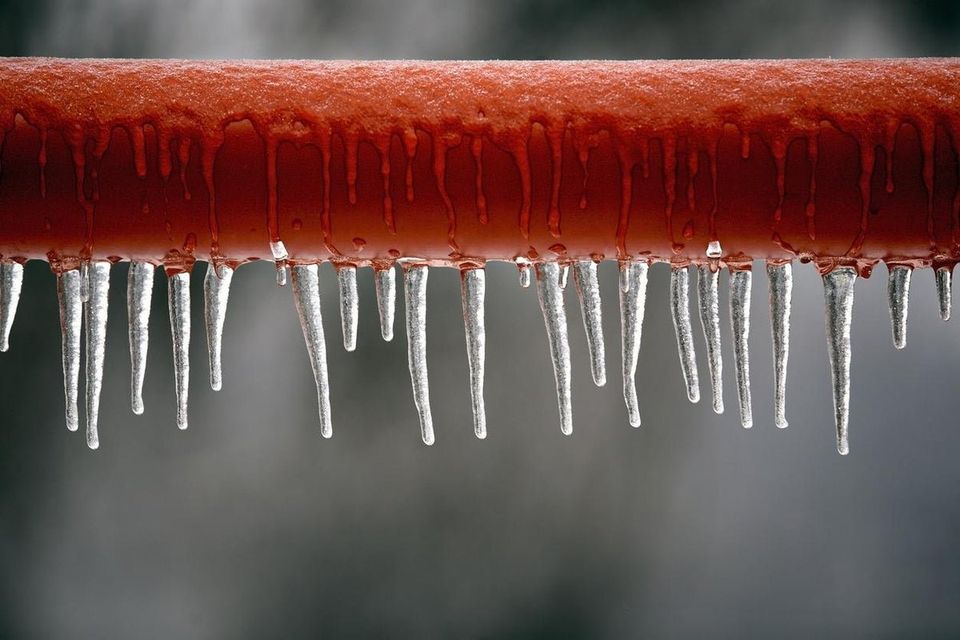We've found this great article pertaining to Preventing and dealing with frozen pipes down the page on the web and figured it made sense to quickly share it with you here.

Winter can ruin your plumbing, especially by freezing pipelines. Right here's just how to prevent it from taking place and what to do if it does.
Introduction
As temperature levels drop, the danger of icy pipes rises, possibly resulting in expensive repairs and water damage. Recognizing just how to prevent frozen pipes is vital for homeowners in cold climates.
Comprehending Icy Pipelines
What causes pipelines to freeze?
Pipes freeze when revealed to temperatures listed below 32 ° F (0 ° C) for extended durations. As water inside the pipes freezes, it increases, putting pressure on the pipeline walls and potentially creating them to burst.
Dangers and problems
Icy pipes can cause supply of water disturbances, residential property damage, and costly fixings. Burst pipes can flooding homes and cause substantial architectural damages.
Signs of Frozen Pipeline
Recognizing icy pipelines early can prevent them from rupturing.
Exactly how to recognize icy pipelines
Look for decreased water circulation from taps, unusual smells or sounds from pipelines, and visible frost on exposed pipes.
Prevention Tips
Insulating at risk pipes
Cover pipes in insulation sleeves or make use of warm tape to shield them from freezing temperature levels. Concentrate on pipes in unheated or outside locations of the home.
Home heating methods
Maintain interior areas appropriately heated, especially areas with plumbing. Open cupboard doors to permit cozy air to flow around pipelines under sinks.
Shielding Outdoor Pipes
Yard hoses and exterior faucets
Separate and drain yard hoses prior to winter season. Install frost-proof faucets or cover exterior taps with shielded caps.
What to Do If Your Pipes Freeze
Immediate activities to take
If you think frozen pipelines, maintain taps open up to eliminate stress as the ice melts. Utilize a hairdryer or towels taken in warm water to thaw pipelines gradually.
Long-Term Solutions
Structural adjustments
Take into consideration rerouting pipelines away from exterior walls or unheated areas. Add additional insulation to attic rooms, cellars, and crawl spaces.
Updating insulation
Purchase high-grade insulation for pipelines, attic rooms, and wall surfaces. Appropriate insulation aids keep regular temperature levels and minimizes the risk of frozen pipelines.
Verdict
Avoiding frozen pipelines needs proactive measures and quick actions. By comprehending the causes, indicators, and preventive measures, homeowners can shield their pipes throughout winter.
5 Ways to Prevent Frozen Pipes
Drain Outdoor Faucets and Disconnect Hoses
First, close the shut-off valve that controls the flow of water in the pipe to your outdoor faucet. Then, head outside to disconnect and drain your hose and open the outdoor faucet to allow the water to completely drain out of the line. Turn off the faucet when done. Finally, head back to the shut-off valve and drain the remaining water inside the pipe into a bucket or container. Additionally, if you have a home irrigation system, you should consider hiring an expert to clear the system of water each year.
Insulate Pipes
One of the best and most cost-effective methods for preventing frozen water pipes is to wrap your pipes with insulation. This is especially important for areas in your home that aren’t exposed to heat, such as an attic. We suggest using foam sleeves, which can typically be found at your local hardware store.
Keep Heat Running at 65
Your pipes are located inside your walls, and the temperature there is much colder than the rest of the house. To prevent your pipes from freezing, The Insurance Information Institute suggests that you keep your home heated to at least 65 degrees, even when traveling. You may want to invest in smart devices that can keep an eye on the temperature in your home while you’re away.
Leave Water Dripping
Moving water — even a small trickle — can prevent ice from forming inside your pipes. When freezing temps are imminent, start a drip of water from all faucets that serve exposed pipes. Leaving a few faucets running will also help relieve pressure inside the pipes and help prevent a rupture if the water inside freezes.
Open Cupboard Doors
Warm your kitchen and bathroom pipes by opening cupboards and vanities. You should also leave your interior doors ajar to help warm air circulate evenly throughout your home.

I'm certainly very eager about How to prepare your home plumbing for winter weather and I'm hoping you appreciated the blog entry. If you enjoyed our blog posting please consider to pass it around. I treasure your readership.
Get Offer
Comments on “Protecting Against Frozen Pipes in Cold Weather: Key Advice”